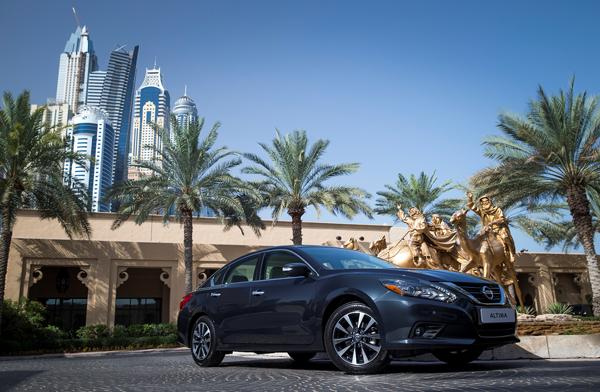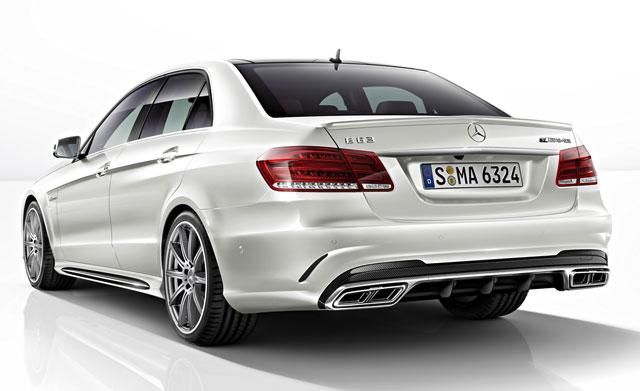You are here
Nissan GT-R: Godzilla is a thrilla’
By Ghaith Madadha - May 01,2017 - Last updated at May 01,2017

Photo courtesy of Nissan
First introduced nearly a decade ago and affectionately known as “Godzilla” by fans, the Nissan GT-R soon became a legend in its own time. Renowned for its huge performance envelope, practicality and attainability, the GT-R was the affordable four-wheel-drive supercar, able to mix with far pricier and more exotic nameplates.
Revised for the second time in its lifespan, the 2017 GT-R is expected to see the model line out until a replacement arrives before the end of the decade. Sharper, more poised, comfortable and faster than ever, the 2017 model is a testament to the GT-R’s enduring technology and high capabilities, and keeps it more than just relevant or competitive among newer rivals.
Manga style
An evolutionary update picking up where the last significantly upgraded model left off in 2011, the newest GT-R’s most noticeable visual difference is its new “V-motion” grille design and mesh, and corresponding bonnet design. Also redesigned are the front bumper, intakes and spoiler lip, along with the side sills and rear bumper and brake vents, while new body colours include a distinctive shiny orange hue.
Together the changes lend the GT-R’s sharp-edged body a sportier, wider and more urgent demeanour. The changes also allow for improved engine cooling and air flow without compromising the GT-R’s high levels of downforce or low wind-cheating CD0.26 aerodynamics.
Under its dramatic almost Manga comic book-like aesthetic, the GT-R is built on a unique front-midship platform primarily incorporating high precision steel and aluminium construction, not shared with any other Nissan alliance vehicle. Stiffened again since its last model revision for improved comfort, handling, road-holding and safety, the GT-R’s exclusive layout is designed to ensure a low centre of gravity and balanced within wheelbase weighting. It features a dry sump engine mounted low and behind the front axle, sending power to a rear transaxle 6-speed dual clutch gearbox and differential. In turn up to 50 per cent power is sent back to the front wheels through a second central driveshaft.
Warp speed
Significantly revised with new components and a power hike from 478BHP to 542BHP at its last major update, the GT-R’s mighty 3.8-litre parallel twin-turbo V6 this time receives revised ignition timing and additional boost pressure, yielding a further 20BHP. Developing 562BHP at 6800rpm and — with a modest torque rise — 470lb/ft at 3300-5800rpm, the 2017 GT-R’s output increases may not seem dramatic, but improves mid-range flexibility and performance, without sacrificing fuel efficiency, which remains unchanged at 10.7l/100km, combined.
Somewhat docile sounding at light load and engine speeds with a distinct mid-range turbo whine, the GT-R’s exhaust note is now more evocative, vocal and resonant at heavier loads and higher revs.
Deceptively yet scintillatingly swift, the GT-R’s somewhat subdued sound, comfortable and hugely confident and poised ride at times disguise its dramatic abilities. With its four-wheel-drive and sticky 255/40ZRF20 front and rear 285/35ZRF20 tyres providing phenomenal traction and quick-spooling turbos, the GT-R unquestioningly bolts with little drama but huge capability.
One of the world’s fastest accelerating cars, the GT-R dispatches the 0-100km/h sprint in 2.7-seconds or less and is capable of a 315km/h top speed. Pulling with vicious urgency through its mid-range and to its 7100rpm rev limit and with decisively swift gear shifts, the GT-R makes short shrift of steep hill climbs, as it accumulates speed at an incredible rate.
Tenacious traction
Highly reassuring with plenty of high speed stability and downforce, the GT-R is also rightly renowned for it enormous levels of traction and grip.
With its four-wheel-drive system actively altering power distribution between front and rear and a limited-slip doing sending power to the rear wheel best able to put it down, the GT-R easily carries huge speed through corners. And with its now stiffer structure, it is more so capable and focused. However, pushed to its high grip limit the GT-R’s suspension is set-up for more benign under-steer, though which the front wheels scramble to find traction if one pushes through, or by easing off the throttle.
Driven with more precision by turning in early and sharp, and lifting off the throttle to shift weight to the rear and outside for tighter cornering lines helps.
However, with its huge grip levels, the GT-R instead thrives on aggressive inputs. Highly effective so, the GT-R is not unlike the 1980s Audi Quattro. Dropping to a lower gear than instinctive when approaching a corner allows access to enough power to unstick the rear wheels and tighten a cornering line. Reapplying the throttle with a heavy foot once pointed in the right direction, the GT-R’s four-wheel-drive hunts for and finds the necessary traction to rocket through and out onto the straight.
The daily drive supercar
With stiffer structure and revised suspension rates, the updated GT-R is not just taut and well-controlled through corners when set to its adaptive dampers’ firmer mode, but it is also more pliant, forgiving and fluently supple ride in comfort mode. Taking imperfections in its stride despite low profile tires, the GT-R is a stable and refined ride.
Meanwhile, its 6-speed dual-clutch automated gearbox’ characteristic telltale low speed gnashing sounds have however been reduced. Finger-snap swift shifting with three responsiveness levels, the GT-R’s manual mode paddle-shifters are now steering wheel-mounted, rather than fixed to the steering column, to allow mid-corner shifting with both hands on the wheel.
Driven in more luxurious Premium version with stitched tan leather, carbon-fibre panels and aluminium elements, the revised GT-R features a redesigned dashboard, higher quality button clicking and thinner dashboard padding, and retains its clear instrumentation and driver-oriented centre console.
From its 20cm infotainment screen one can access, configure and personalise a long list of additional performance instruments, including but not limited to g-force, boost pressure, gearbox temperature and oil pressure gauges. Though wide and low, the GT-R’s driving visibility is good, and driving position focused, supportive and adjustable, but slightly high-set. Front space is nevertheless generous, rear useable and boot space accommodating, but hindered by a high loading lip.
TECHNICAL SPECIFICATIONS
Engine: 3.8-litre, in-line, front-mid, twin-turbo V6-cylinders
Valve-train: 24-valve, DOHC, continuously variable valve timing
Bore x stroke: 95.5 x 88.4mm
Compression ratio: 9:1
Gearbox: 6-speed automated dual-clutch, transaxle
Drive-line: Four-wheel-drive, limited slip differential
Ratios: 1st 4.0565; 2nd 2.03016; 3rd 1.595; 4th 1.2486; 5th 1.0012; 6th 0.7964; R 3.3833
Final drive ratios, F/R: 2.937/3.7
Power, BHP (PS) [kW]: 562 (570) [419] @6800rpm
Specific power: 147.9BHP/litre
Power-to-weight: 320.7BHP/tonne
Torque, Net, lb/ft (Nm): 470 (637) @3300-5800rpm
Specific torque: 167.6Nm/litre
Torque-to-weight: 363.5Nm/tonne
Maximum engine speed: 7100rpm
0-100 km/h: 2.7-seconds (est.)
Top speed: 315km/h
Fuel consumption, combined: 11.8-liters/100 km
Fuel capacity: 74 litres
CO2 emissions, combined: 275g/km
Height: 1370mm
Width: 1895mm
Length: 4710mm
Wheelbase: 2780mm
Tread, F/R: 1590/1600mm
Minimum ground clearance: 105mm
Aerodynamic drag co-efficient: 0.26
Head room, F/R: 967/850mm
Legroom, F/R: 1132/670mm
Shoulder room, F/R: 1379/1270mm
Boot capacity: 315-litres
Unladen weight: 1740kg
Weight distribution F/R: 54 per cent/46 per cent
Steering: speed-sensitive electronic assist rack and pinion
Lock-to-lock: 2.4-turns
Suspension, F/R: Double wishbone/multi-link, adaptive dampers
Brakes, F/R: 6-/4-piston callipers, ventilated discs, 390/380mm
Tyres, F/R: 255/40ZRF20/285/35ZRF20
Related Articles
First introduced in 2013 and now thoroughly redesigned and enhanced for 2016, the new Nissan Altima, brings an assertive new corporate desig
Swimming alongside predominantly German cars in the mid-size executive segment, the shark-like Maserati Ghibli competes with traditional sal
A brazenly brutish and beguilingly brisk Benz, the E63 AMG S-Model 4Matic re-draws the boundaries of the super saloon. Powered by the more powerful 577BHP version of Mercedes-Benz’ AMG performance arm’s 5-litre twin-turbo V8 engine and channelled through four-wheel-drive traction, the E63 AMG S-Model 4Matic is a luxury executive saloon, whose astonishing 3.6-second 0-100km/h acceleration belies its size, weight, and delves into bona fide contemporary supercar territory.



















